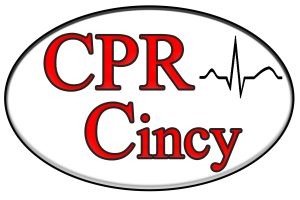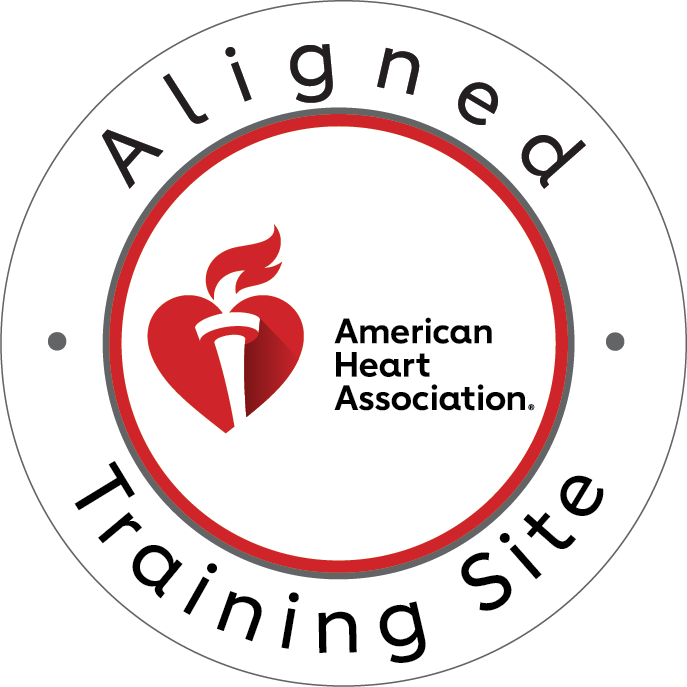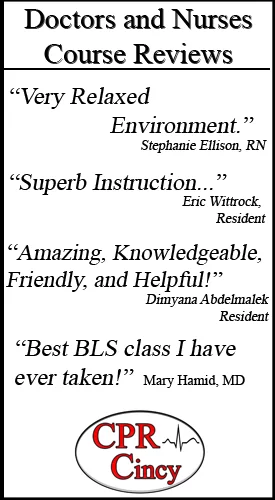In October 2025, the American Heart Association (AHA) and the American Academy of Pediatrics (AAP) released updated guidelines for pediatric resuscitation, consolidating pediatric and adult chains of survival into a unified six-link framework. This updated Pediatric Chain of Survival highlights evidence-based steps to improve survival and long-term outcomes in pediatric cardiac emergencies. Understanding this framework is crucial for parents, caregivers, healthcare providers, and community members who may encounter a child experiencing cardiac arrest.
Understanding the Differences: Pediatric vs. Adult Cardiac Emergencies
Children are not simply small adults. Pediatric cardiac arrests often result from respiratory failure, shock, or underlying medical conditions rather than primary heart disease. This difference underscores the need for specialized training and a tailored approach. Early recognition and intervention can dramatically improve outcomes, while delayed or inappropriate responses can lead to permanent neurological damage or death. The updated six-link Pediatric Chain of Survival provides clear guidance on both in-hospital and out-of-hospital emergencies, from prevention to long-term recovery.
The Five Links of the Pediatric Chain of Survival (In-Hospital)
Link 1: Prevention
The first link is prevention and preparedness. Prevention focuses on recognizing early warning signs of deterioration, implementing safety measures, and addressing underlying conditions proactively. In hospitals, vigilant monitoring, rapid identification of clinical changes, and appropriate interventions can prevent many pediatric cardiac arrests. In community settings, prevention includes educating caregivers about safe sleep, proper medication management, and recognizing early signs of respiratory distress, dehydration, or infection that could escalate into cardiac compromise.
Link 2: Early Recognition and Activation of Emergency Response
The second link is the early recognition and activation of the emergency response system. Rapidly identifying cardiac arrest—signaled by unresponsiveness, abnormal breathing, or absent pulse—is critical. Once recognized, immediate activation of emergency medical services (EMS) ensures that professional help is on the way. In hospital settings, this often involves calling a rapid response or code team. Clear communication protocols, including the use of standardized terminology and role assignments, are essential to ensure that every team member acts efficiently and effectively.
Link 3: High-Quality CPR
High-quality CPR forms the third link and is essential for maintaining circulation to vital organs. The 2025 guidelines provide specific recommendations for infants and children: chest compressions should be about one-third the depth of the chest, at a rate of 100 to 120 compressions per minute. Compression-to-ventilation ratios are 30:2 for single rescuers and 15:2 for two rescuers. Interruptions should be minimized, and effective ventilation techniques should be used to maintain oxygenation. Emphasis on proper hand placement, compression depth, and rate is critical for maximizing blood flow during resuscitation.
The fourth link is rapid defibrillation. For children older than one year, AEDs with pediatric pads should be used whenever available. If pediatric pads are not accessible, adult AEDs can be used. Early defibrillation is crucial in cases of shockable rhythms such as ventricular fibrillation or pulseless ventricular tachycardia. Prompt defibrillation, combined with high-quality CPR, significantly increases survival rates and reduces the risk of long-term neurological injury.
Link 4: Advanced Resuscitation
Advanced resuscitation is the fifth link and includes advanced interventions performed by trained healthcare providers. This encompasses the administration of medications such as epinephrine and amiodarone, advanced airway management, and specialized monitoring. Rhythm recognition guides the appropriate use of defibrillation, and pediatric-specific equipment ensures safe and effective resuscitation. Continuous assessment and team coordination allow for timely adjustments to interventions as the patient’s condition evolves.
Link 5: Post-Cardiac Arrest Care
The final, sixth link in the 2025 Pediatric Chain of Survival is recovery and survivorship. This updated terminology reflects a broader focus beyond immediate post-arrest care, emphasizing long-term recovery, rehabilitation, and support for both the child and their family. Key components include optimizing neurological outcomes, managing ongoing medical needs, and addressing the emotional and psychological impact of the event. Family-centered care is a cornerstone of this link, providing education, counseling, and support resources to promote resilience and improved quality of life after cardiac arrest.
The Pediatric Chain of Survival (Out-of-Hospital)
Out-of-hospital cardiac arrest emphasizes similar principles but requires additional community preparedness and response. Prevention remains the most powerful link, and widespread knowledge of pediatric CPR, proper use of AEDs, and early recognition of emergencies is critical. High-quality pediatric CPR by bystanders can double or triple survival rates. Techniques vary by age: infants require two-thumb compressions, while children may need one or two hands depending on size. Ventilation is critical in pediatric arrests because respiratory failure often precedes cardiac arrest. Immediate action, combined with timely EMS activation, has a profound impact on outcomes. Real-world cases demonstrate that prompt recognition and intervention dramatically increase survival and reduce complications.
The 2025 unified Pediatric Chain of Survival provides a comprehensive, evidence-based framework for responding to pediatric cardiac emergencies. Each link—prevention and preparedness, early recognition, high-quality CPR, rapid defibrillation, advanced resuscitation, and recovery and survivorship—plays a vital role in improving survival rates and long-term outcomes. Every person, from healthcare professionals to parents and community members, can be an essential link in this chain. By learning pediatric CPR, understanding warning signs, and responding quickly, anyone can make a difference in a child’s life. Continuous education, hands-on practice, and awareness of the updated 2025 guidelines ensure that when emergencies occur, responders are ready, confident, and effective in saving lives.
Conclusion
Understanding and implementing the Pediatric Chain of Survival can mean the difference between life and death for a child in a cardiac emergency. Each link in this critical chain—from early recognition and activation of emergency response to prevention and recovery—plays a vital role in improving outcomes for our youngest patients. Whether you’re a healthcare provider, teacher, parent, or community member, your knowledge and preparedness directly impact a child’s chances of survival.
The statistics are clear: immediate bystander CPR can double or even triple a child’s chance of survival. Yet pediatric emergencies require specialized knowledge and techniques that differ significantly from adult resuscitation. By familiarizing yourself with the Pediatric Chain of Survival and obtaining proper training, you become an essential link in protecting the children in your community.
Call to Action
Don’t wait until an emergency happens to wish you were prepared. Take action today to become a confident responder in pediatric emergencies.
CPR Cincinnati, an American Heart Association training site, offers comprehensive PALS classes in Cincinnati designed specifically for healthcare providers and those who work with children. Our hands-on, stress-free training environment ensures you’ll gain the practical skills and confidence needed to act decisively when seconds count.
Whether you need initial certification or renewal in PALS, BLS for Healthcare Providers, ACLS, or CPR and First Aid, our expert instructors provide the knowledge you need to strengthen every link in the Pediatric Chain of Survival.
Ready to make a difference? Contact CPR Cincinnati today to enroll in our CPR certification in Cincinnati courses and become the lifesaving link a child may need tomorrow.
4 FAQs About the Pediatric Chain of Survival
Q1: How does the Pediatric Chain of Survival differ from the adult chain?
The Pediatric Chain of Survival emphasizes prevention as the first critical link, recognizing that most pediatric cardiac arrests result from respiratory issues rather than primary cardiac problems. Additionally, the pediatric chain prioritizes addressing airway and breathing concerns immediately, while the adult chain focuses on rapid defibrillation for sudden cardiac events. The compression-to-ventilation ratios and hand positioning during CPR also differ significantly between pediatric and adult resuscitation.
Q2: At what age should someone use the Pediatric Chain of Survival instead of the adult chain?
The Pediatric Chain of Survival applies to infants (under 1 year old) and children up to puberty (approximately 12-14 years old or until signs of puberty appear). Once a child reaches puberty, adult resuscitation protocols are generally followed. However, healthcare providers should use their clinical judgment based on the child’s size and development when determining which protocol to follow.
Q3: Can parents and non-healthcare providers learn the Pediatric Chain of Survival?
Absolutely! While comprehensive PALS certification is designed for healthcare providers, parents, teachers, coaches, and caregivers should learn pediatric CPR and basic life support techniques. Understanding the principles of the Pediatric Chain of Survival—especially early recognition, calling for help, and performing high-quality CPR—empowers anyone who cares for children to respond effectively in emergencies. CPR and First Aid courses provide this essential knowledge.
Q4: What is the most important link in the Pediatric Chain of Survival?
Every link in the chain is critical, and the chain is only as strong as its weakest link. However, early recognition and immediate high-quality CPR are often considered the most crucial because they must happen within minutes to prevent irreversible damage. That said, prevention remains the most effective strategy, as many pediatric cardiac arrests are preventable through proper supervision, injury prevention, and management of underlying medical conditions.






